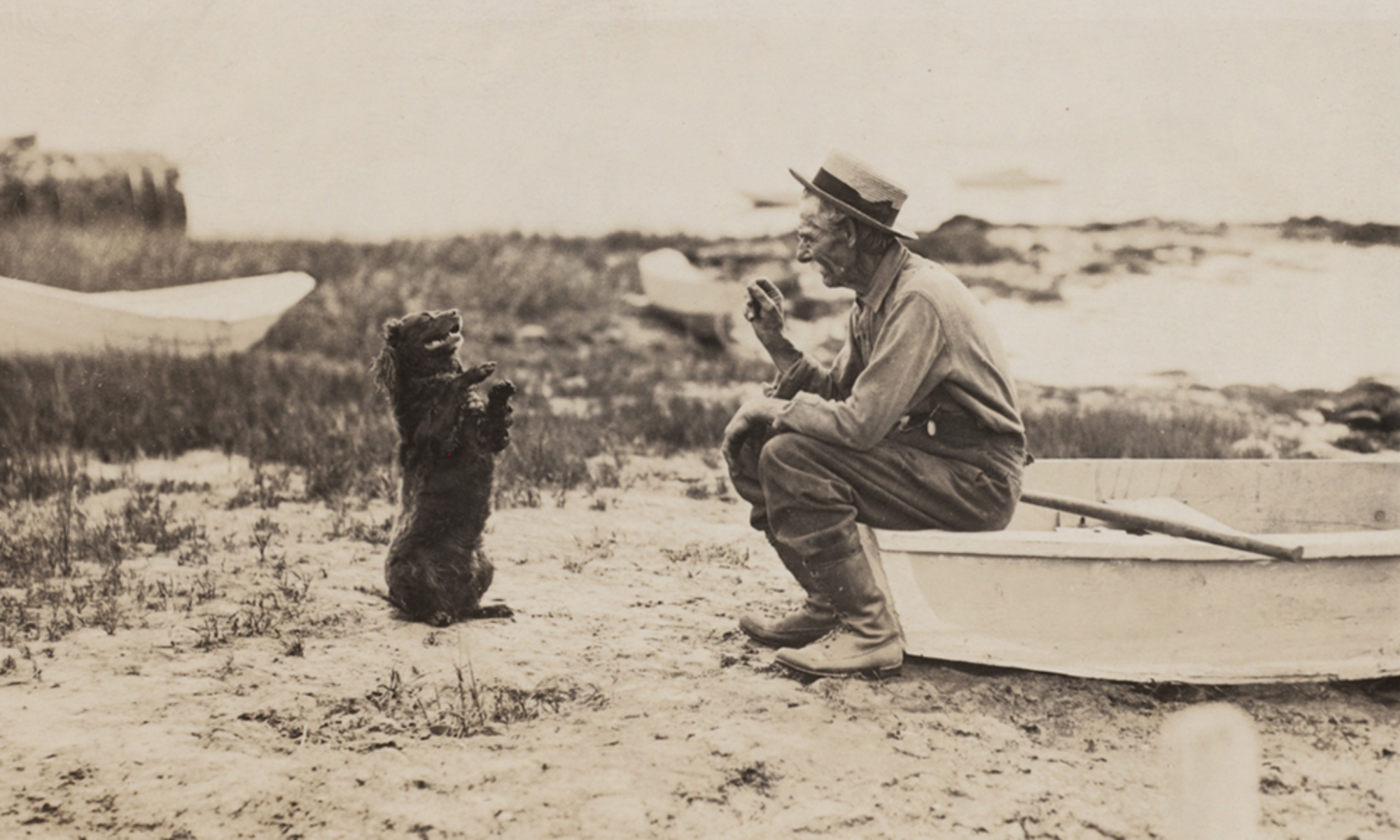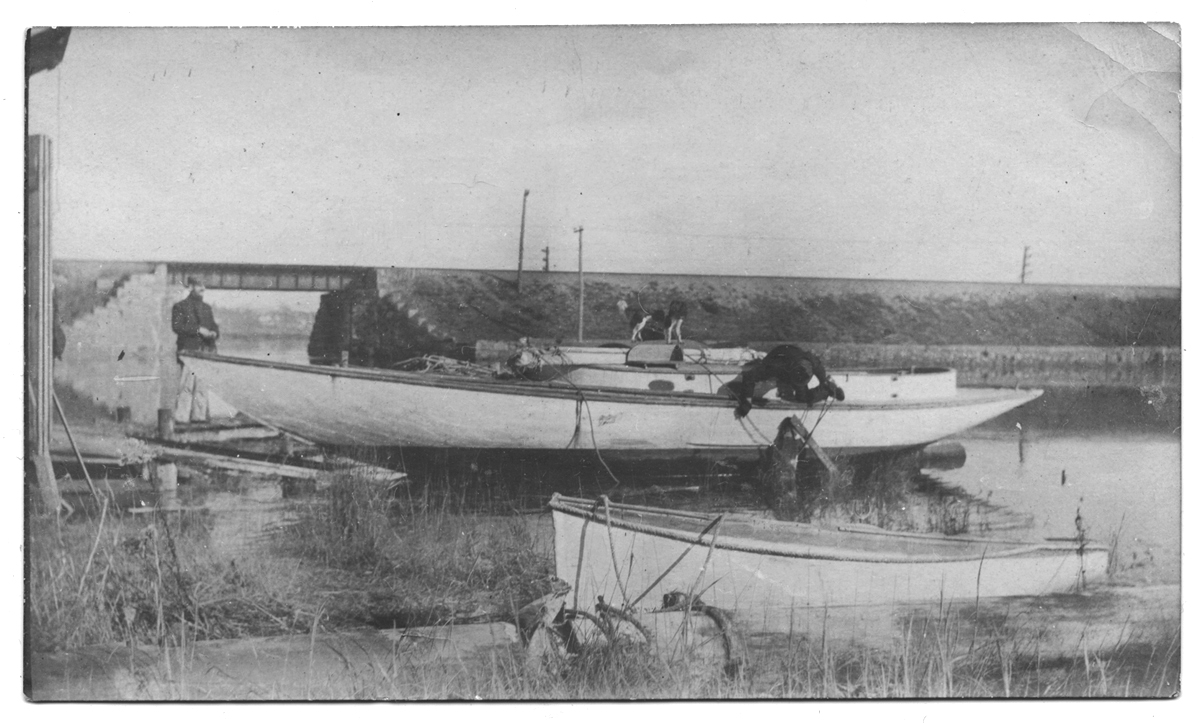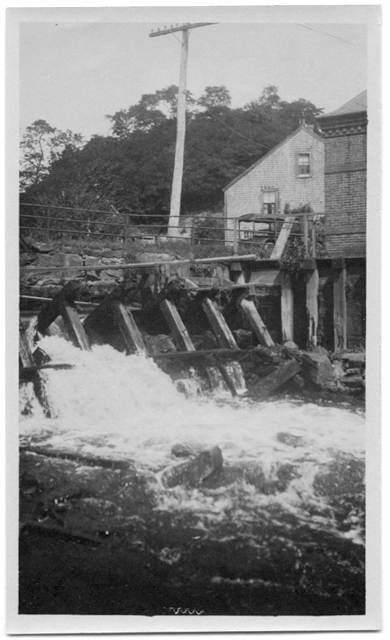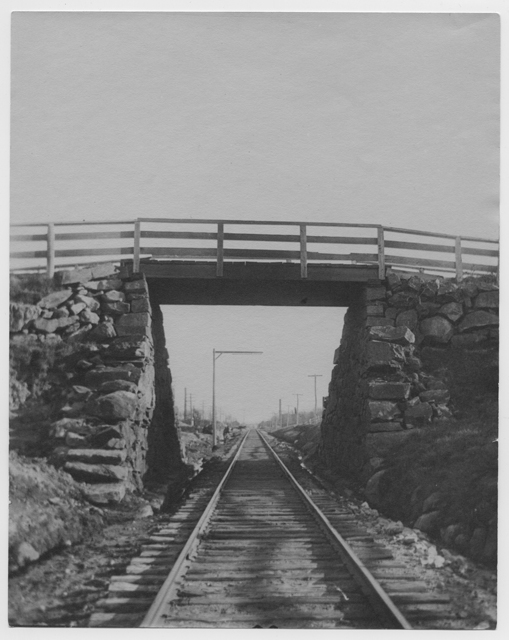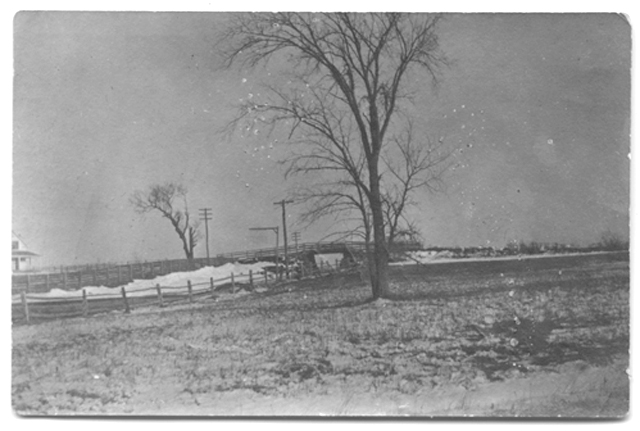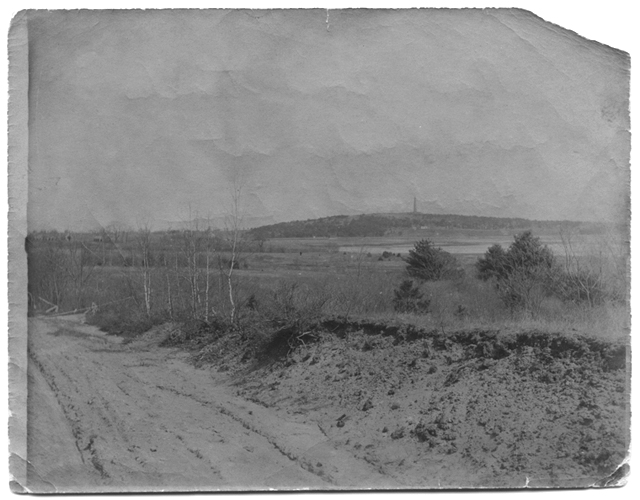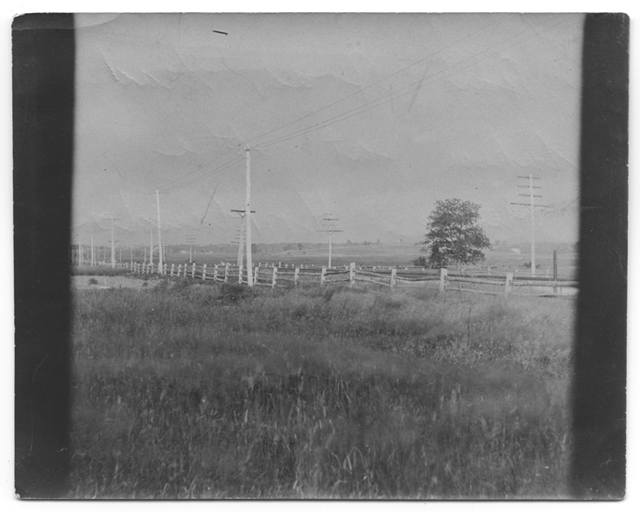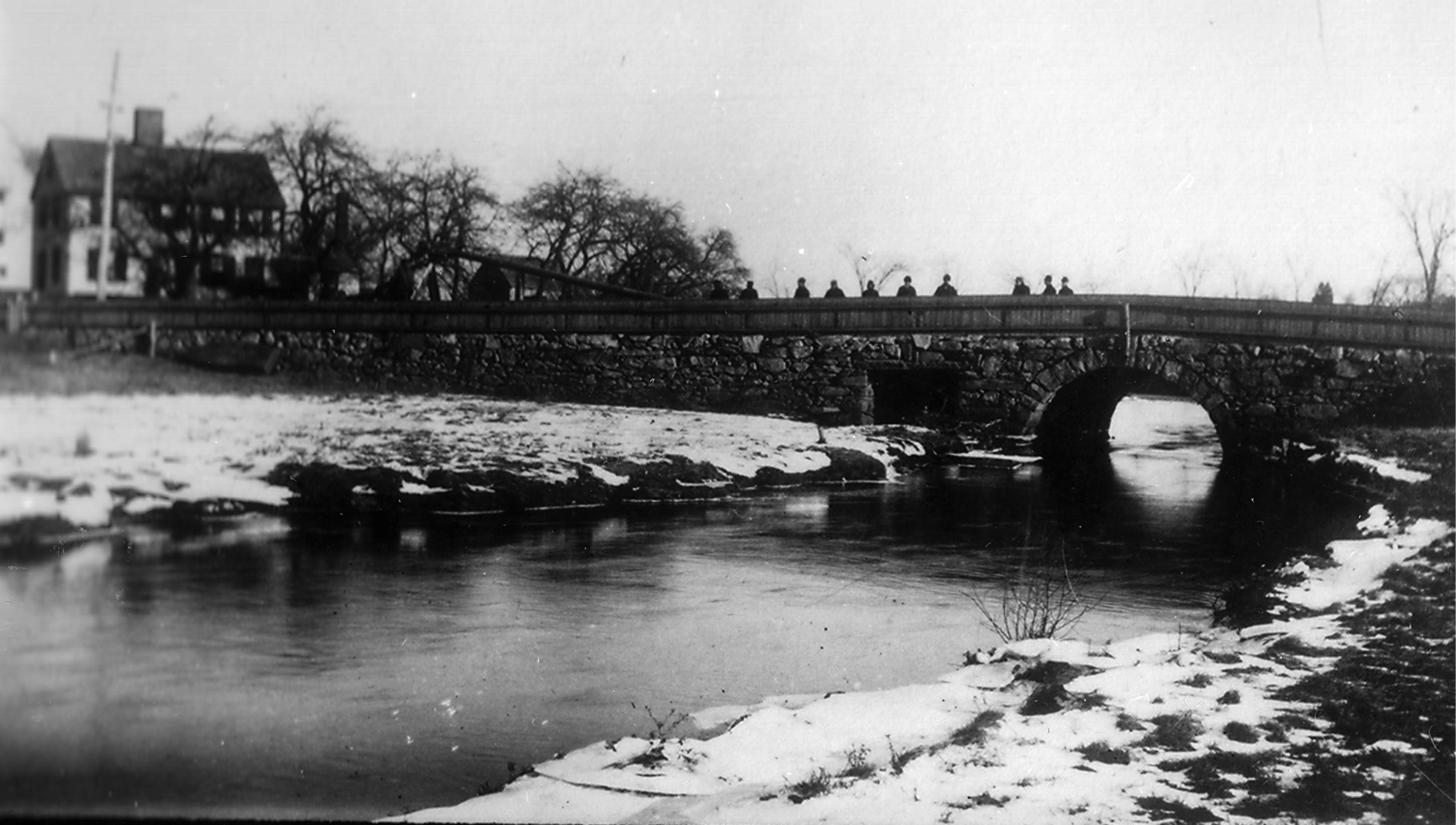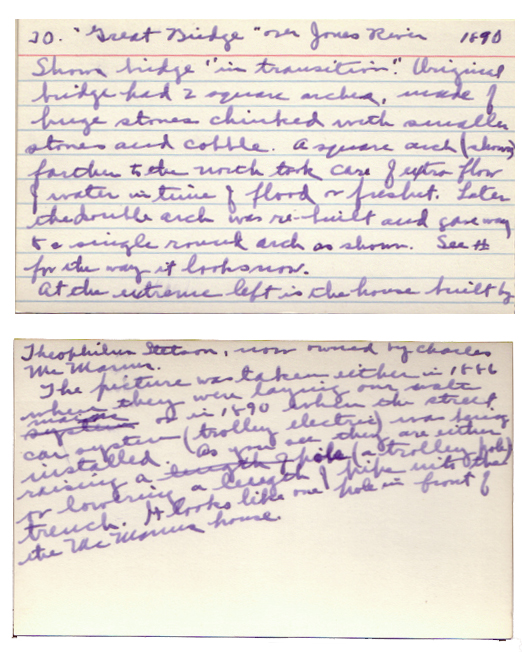The Great Bridge, or the bridge over Main Street (Route 3A) where the road intersects with Brook Street, did not receive its name because of its architectural significance, but because it carried the Great Road, running from Plymouth to Boston, over the Jones River.
The early history of this bridge and its predecessors is noted in the Town’s Annual Report from 1895. (These Annual Reports are great sources of information about Kingston’s history. We have a set here at the library if you’d like to check them out.) The yearly recap about the Great Bridge is as follows (phrases bolded for emphasis only in this post):
Horatio Adams, Alexander Holmes, and Azel H. Sampson were chosen a committee to make the alterations in the highway near the Great Bridge, ordered by the County Commissioners upon petition of George B. Thomas, and others, and a new arch bridge has been substituted for the arch and flat covered bridges, equal in construction and workmanship to any stone structure in this part of the State. As there has been some controversy over the history of the bridges built over the river at this place at different periods, the following may be interesting to some of our people: The first bridge was a wooden structure, and was built in 1715. This existed until 1825, when, at a town meeting held May 2nd, it was voted, “That a committee of five persons be chosen with authority to contract in behalf of the town for a new bridge to be built where the Boston Road crosses Jones River, to have a stone covering, to be 25 feet wide, and of such height as the committee shall judge the public good requires, and the following persons were chosen: Thomas P. Beal, Richard F. Johnson, Eli Cook, James Sever, Esq., and John Thomas.”
Four years later—April 6, 1829—it was voted “To choose a committee of seven persons to investigate the state of the bridge over Jones River, and the following persons were chosen: Eli Cook, John Sever, Joseph Holmes, Zebulon Bisbee, Robert Cook, Nathaniel Faunce, and Benjamin Delano.” Voted also, “That the committee be instructed to proceed immediately to examine the state of the bridge and to make a report of the result of their examination at the adjournment of this meeting.”
At the adjournment, the committee reported as follows: “The committee appointed to examine the shattered bridge near Timothy French’s have attended that service and report:
First—That in their opinion said bridge may and ought to be repaired upon its original foundation, and the bottom thereof made secure from undermining by a plank platform.
Second—That there be made one other arch or passageway for water on the North-west of, and near the present archway of seven feet in ye clear, built and covered with stone.
Third—The committee have made an estimate of the probable expense of repairs and alterations as above, and believe the whole may be done for the sum of $250.
By order of ye Committee,
ELI COOK, Chairman.”
They then “voted to accept the above report and that the Selectmen make the alterations and repairs to the bridge which are recommended in said report.”
The bills that were paid by the town are in evidence that the arch bridge was built in 1825, and the Northerly passageway in 1829, in accordance with the votes passed by the town.
Check out these photos, taken not long before the 1895 Annual Report.

Emily Drew wrote that the image above was captured “either in 1886 when they were laying our water mains or in 1890 when the street car system (trolley electric) was being installed.” She draws attention to the men “either raising a pole (a trolley pole) or lowering a length of pipe into the trench.” Even without her clues about its date, you can tell that this is the bridge that was repaired in 1829 because of the square arch to the left of the round arch.

Here’s the view looking West, likely taken the same day, as evidenced by that pole/pipe.
Now take a look at the bridge (below) built in 1895.

Notice the single arch?
As always, you can send your comments or questions to history@kingstonpubliclibrary.org.
Source: Block quote from the Town of Kingston Annual Report of 1895, part of the Town of Kingston Publications (TOK4), and additional information from Emily Fuller Drew’s lantern card slide file, part of the Jones River Village Historical Society Lantern Slide Collection (IC4). Images from the Local History Room Image Collection (IC7) and the Delano Photograph Collection (IC11) .
